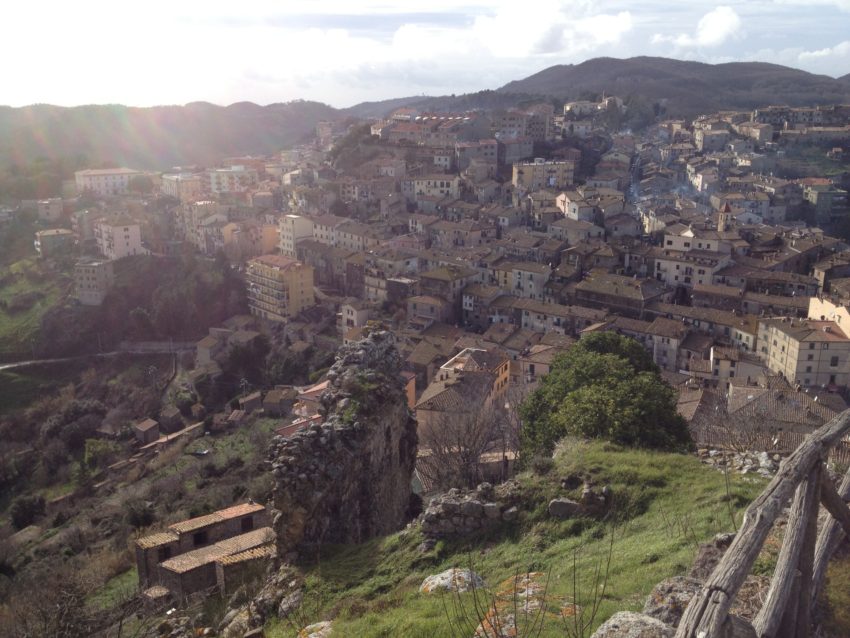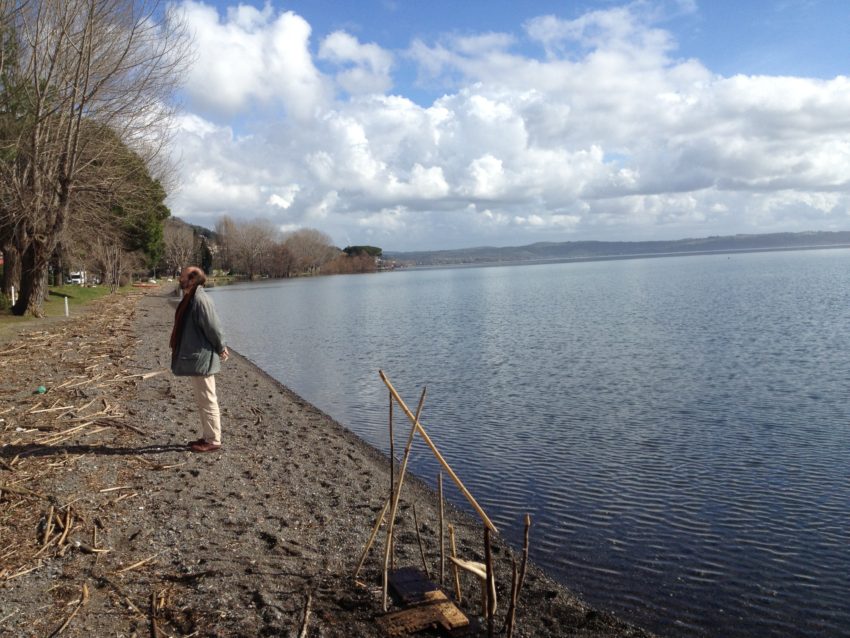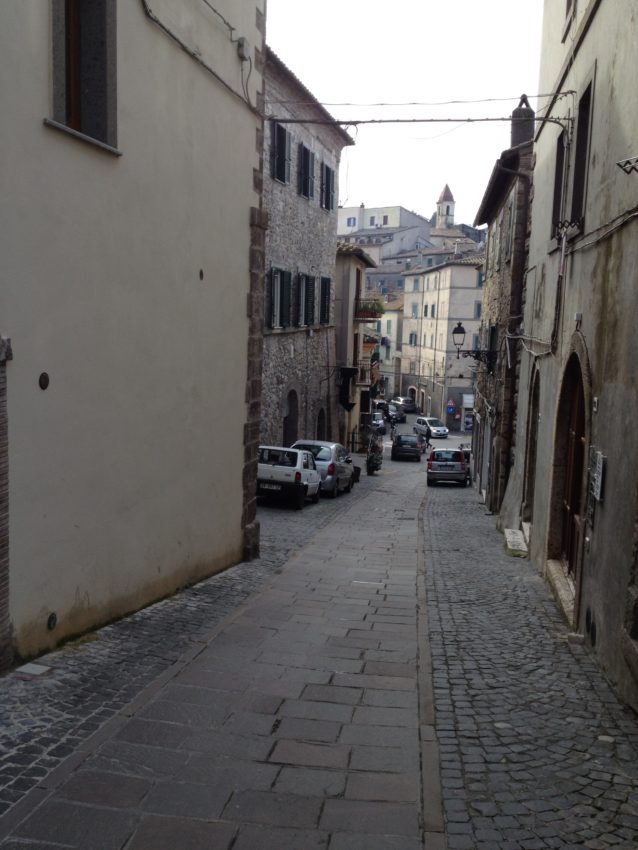Retired in Rome Journal: Day trip to Lago Bracciano area is Rome off the beaten path



Believe it or not, Rome often gets a bad rap. People think it’s dirty, crowded, hot, expensive. Of course, all of it is true. So what? In summer, so is New York. However, Rome’s reputation is compounded by the tourists’ beaten path which has my favorite city on the bottom rung of their pasta trail. I know the routine. In 1978, I took it. You start in Milan and gaze for hours at the Duomo and dig into your first plates of real Italian food. You go east to Venice and swoon in the most romantic city on earth. You then drop down to Florence where you bathe in enough art you’re seeing Pietas in your sleep. Finally, you slough off to Rome. Suddenly, you reach the Sistine Chapel and you’re so tired you don’t lie on your back to look at the ceiling. You just fall asleep.
Take some advice: When the art in the churches looks no better than the paint on your walls, when you start longing for a bacon cheeseburger, when you’re pouring gelato down your sweaty shorts, get out of Rome.
Rome’s region of Lazio is filled with interesting day trips. I took a number of them when I lived here from 2001-03 and I’ll blog about a few more while I’m living here now. I don’t need to cool off. Rome hasn’t reached 60 degrees since I arrived four weeks ago. I have not worn a short-sleeve shirt yet. But yesterday I ventured out to Lago Bracciano. Few know this but Rome is surrounded by beautiful lakes, so beautiful that Pope John Paul II used Castel Gandolfo on Lake Albano south of Rome as his summer retreat. Lago Bracciano is the second largest volcanic lake in Lazio and only 20 miles northwest of Rome.
I arrived on a cool, cloudy day which means I saw the lake different than nearly every Roman who has visited it. It was practically empty. Normally, its sliver-narrow beach is lined with umbrellas from Romans escaping the heat. Yesterday, the 22-square-mile lake had only a couple of passersby. One middle-aged man in a heavy coat stood on the bank and held his head up to the sky with his eyes closed, trying to will some glimpse of sun onto his face. The lake isn’t massive but is so close to Rome it looks like the Pacific Ocean. It’s cobalt blue and surrounded by the rolling hills of the rugged northern Lazio countryside. Some small sailboats anchored offshore, looking like little toys in the vastness of the freezing cold water.
I had lunch at a lakeside inn called Ristorante Casina Bianca. It was a snow-white building with a few elderly diners braving the 50-degree temperatures on the expansive patio. Inside was chilly. A blazing fire in the corner didn’t reach me as I scanned a short list of Italian country favorites. I ordered coniglio alla cacciatore. Everyone knows chicken cacciatore. It comes from the verb cacciare: to hunt. Coniglio is the rabbit version of the favorite Lazio dish that crossed the Atlantic and has stayed in the U.S. for generations. It was a big pile of mangled brown meat, as basic a dish as you could get. It was so tender I could cut it with my fork. The Italians cook this dish with vinegar which gave it a luscious lemony tang.
The mother of the restaurant owner had a heavy Neapolitan accent kept bugging me about dessert. I saw nothing that satisfied my growing addiction to tiramisu and chocolate cornettos so I settled on her tray of traditional fried dough covered in powdered sugar Italians serve during Carnival which, in Italy, is Feb. 22-March 4. (Speaking of Venice, I understand the Casanova Costume Ball March 1 is Italy’s best party of the year. One goal of some is to have sex with someone without taking either of your mask’s off.)
This area of Lazio is packed with Etruscan ruins. They’re a fascinating people, Rome’s first settlers who built the foundation for which the Roman Empire sprung. Remember, Romulus was Etruscan and was the founder of Rome — unless you’re his brother Remus and think he was nothing more than a selfish asshole. They were a tribe that came from what is now Turkey, or northwest Asia, depending on the historian you read, who settled here about 800 B.C., making Rome nearly a 3,000-year-old city. The Etruscans were way ahead of their time. In Tuscany they developed a major mining industry, including alunite, the main element in what is now aluminum. They traded with the Greeks and Phoenicians. They were master sailors, architects, metalworkers artists and soldiers. Historian’s problems have been there is no written history of their culture. Ancient Rome had Cicero who chronicled the gladiator battles and provided the bible for the gladiator school I attended in 2002. The only clues anyone had of what the Etruscans were like are in their tombs.
Etruscan tombs are all over Lago Bracciano. I came across some on a road through the forest. They’re basically a pile of large stones but many of them cover a deep opening that goes about 5-10 feet underground. Today nothing is in them but rain water and mud but they’re big enough to figure they held the Etruscan valuables, something akin to the tombs in Egypt.
I continued uphill to another of a long list of charming hill towns I’ve found all over Italy. Tolfa has about 5,000 people and the main road corkscrews through stone buildings and narrows to a cobblestone alley. Old men struggled up the hill on bikes. Women gossiped on their stoops. A healthy white pooch lazily reached up his snout for a pet after a long nap. The alley winds up to the top of the hill where the remains of the Frangipani castle, destroyed by French troops in 1799, look out over the charming town and Lazio countryside below. Red-tile roofs formed a wild mosaic in the foreground of Lazio’s rolling hills behind it. A cool breeze turned my hair, long overdue for a cut, into a rat’s nest. At 1,600 feet, I could see why this would be a popular retreat in July.
Afterward I sat in a gelateria and had a latte macchiato and the richest, creamiest chocolate cornetto I’ve had in Italy. My addictions keep growing. Now I have one for rural Lazio, too.

